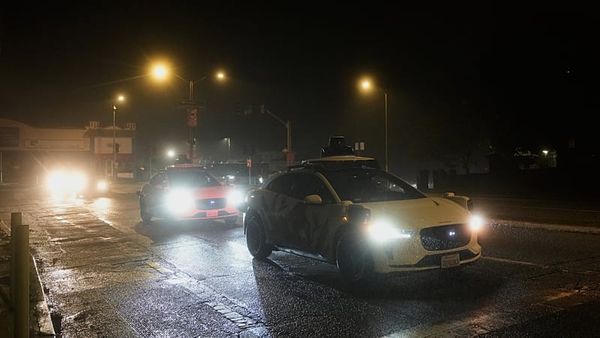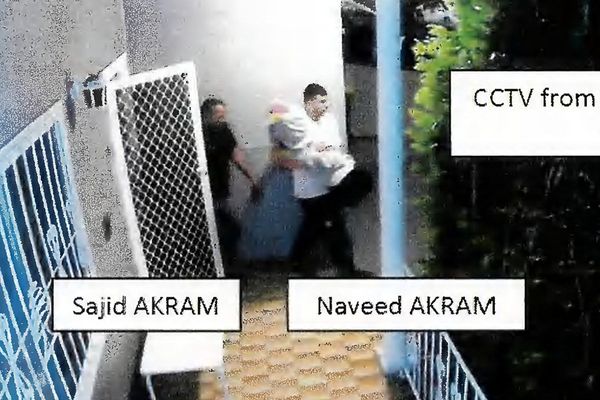
The Tesla Model S and Model X have evolved since they launched more than a decade ago, just not in the same way as most cars do.
Ask the average car buyer to spot the differences between the original Model S and the one Tesla unveiled Thursday, and besides the bumper, they'll probably think that not much has changed. The upgrades are, of course, real, but they’re subtle compared to the generational change automakers festoon their most prestigious models with.
That's a shame. The Model S and Model X helped Elon Musk build his tech empire and sparked a global electric-vehicle revolution. Both of them once proved that EVs could be fast, sexy and practical—true game-changers at a time when the electric space was dominated by glorified golf carts. And they have passed the longevity tests with flying colors, with some owners clocking over a million miles on their Model S.
But the industry has grown fast, and these two Teslas now feel like an afterthought. They're now low-volume models, so they got a low-effort upgrade.
Gallery: Tesla Model S and Model X (2025)







The Model S now gets 410 miles of range (up from 402 miles before), while both EVs get upgraded suspension, adaptive headlamps, quieter cabins and a new camera in the front among other small changes such as dynamic ambient lighting and new bumpers. The Model S now starts at $84,990 whereas the Model X is priced $89,990. They're both $5,000 more expensive.
Naturally, the fanbase was quick to express disappointment. They were expecting upgrades seen on the Cybertruck, like an 800-volt architecture that enables faster charging and steer-by-wire. What they got instead were some chassis enhancements, add-on features and slightly more range.
The “competition offers 500 miles of range for the sedan and 450 miles for the SUV? What is going on Tesla? Did you guys/gals [give] up on innovation? Where are bigger battery options? Where is faster charging?” one Tesla owner commented on X referring to the Lucid Air and Gravity.
“The Lucid Air is already beating the Model S. Once the Gravity gets over its supply chain hiccups, I won’t be surprised to see the X fall by the wayside,” a Reddit user said. “I was in the market for a new S and X. But meh, the Kia EV9 GT is getting more interesting every day,” another member on X said.
| Electric SUVs | EPA Range | Charging Speed (Carmaker-suggested) | Battery Voltage | Horsepower | Starting Price |
| Tesla Model X | 335-352 miles | 179 miles in 15 minutes (250 kW) | 407 volts | 670-1020 hp | $89,900 |
| Lucid Gravity | Up to 450 miles | 200 miles in 11 minutes (400 kW) | 926 volts | Up to 828 hp | $79,900 ($94,900 currently) |
| Rivian R1S | 270-410 miles | 150 miles in 20 minutes (220 kW) | 400 volts | 533-1025 hp | $75,900 |
| Kia EV9 | 230-305 miles | 10-80% in 24 minutes (350 kW) | 800 volts | 201-379 hp | $54,900 |
| Hyundai Ioniq 9 | Up to 335 miles | 10-80% in 24 minutes (350 kW) | 800 volts | 215-422 hp | $58,955 |
Tesla is no longer the disrupter and innovator it once was—not in the passenger vehicle business, at least. Lucid, Rivian, General Motors, Hyundai and Kia are pulling ahead and they're happy to entice Tesla buyers with tempting discounts and lease and financing options. The Model S has more competition than ever now, from the Lucid Air to the Porsche Taycan and whatever Mercedes-Benz is cooking up. As for the Model X, the luxury electric SUV space is full of other options these days; Rivian's R1S, in particular is a strong alternative, or even an upgrade for people looking to move on from their older Tesla. There seems to be little reason to buy their newer versions now.

Maybe this is exactly how it's supposed to go. CEO Elon Musk has made clear that Tesla is in the middle of a pivot to artificial intelligence and robotics. But it still needs to sell cars to fuel those ambitions. That’s where the majority of its income comes from.
Sure, the Model Y and Model 3 received more thorough upgrades. But those, too, are considered facelifts, not generational upgrades like the 2026 Toyota RAV4 or the second-generation Rivian R1S and R1T.
The Model S was able to cover over 400 miles on a single charge in 2020, as Musk celebrated in a tweet back then. Five years later, it’s at… 410 miles. So even if it gets a new color and an extra camera on the outside, it’s still an aging vehicle at heart.
The Lucid Air can cover over 500 miles of EPA-estimated range on a single charge. Its base variant is good for 420 miles of range and even undercuts the Model S by some $15,000, starting at $69,900 while being a more luxurious and faster-charging option.
If you own a Tesla, Lucid will happily sell you its superior EV with thousands of dollars in discounts if you trade-in your vehicle.
It’s not just the driving range where rivals have outclassed Tesla. Some of the fastest-charging EVs on the market now are made by Lucid, General Motors and Hyundai/Kia. Teslas still use a 400 volt architecture, whereas rivals have shifted to 800 volts for faster charging speeds.
The Hyundai Ioniq 5 costs half the price of the Model S, but it can charge from 10-80% in under 20 minutes when plugged into a 350-kilowatt dispenser. The Lucid Gravity can add 200 miles of range in just 11 minutes of charging. It's eons ahead of the Model X in terms of range, charging speeds and overall tech.
| Electric Sedans | EPA Range | Charging Speed (Carmaker-suggested) | Battery Voltage | Horsepower | Starting Price |
| Tesla Model S | 368-410 miles | 205 miles in 15 minutes (250 kW max) | 407 volts | 670-1020 hp | $84,900 |
| Lucid Air | 420-512 miles | 200 miles in 12 minutes (350 kW max) | Up to 924 volts | 430-1234 hp | $69,900 |
| Porsche Taycan | 252-318 miles | 10-80% in 18 mins (320 kW) | 800 volts | 402-1019 hp | $100,300 |
| BMW i5 | 259-310 miles | 100 miles in 11 minutes (205 kW) | 400 volts | 335-389 hp | $67,100 |
Sales of the Model S and Model X have also been underwhelming. Tesla doesn’t even mention them in its quarterly sales reports. It bundles them into an unceremonius category labeled “other models,” which also includes the Cybertruck and the Semi.
Together, they accounted for just 85,133 deliveries globally in 2024. The combined deliveries of the Model 3 and Model Y totaled 1.7 million.

I’ll admit that I have a soft spot for the Model S. I think the outgoing version drove superbly, and the latest iteration will too. Its design has aged better than most. And I think the Model X’s Falcon Doors are rad—even though they’ve given owners nightmares with quality issues.
But they just aren't novel enough anymore to justify their purchase over the ever-intensifying competition. This refresh likely won’t revive the line-up or generate any meaningful sales and income that Tesla desperately needs. And with that, Tesla may as well have pushed its few remaining Model S and Model X fans into the arms of its competitors, which are now a generation or two ahead and offer better value.
It's not quite the treatment you’d expect for the EVs that once changed everything.
Have a tip? Contact the author: suvrat.kothari@insideevs.com







